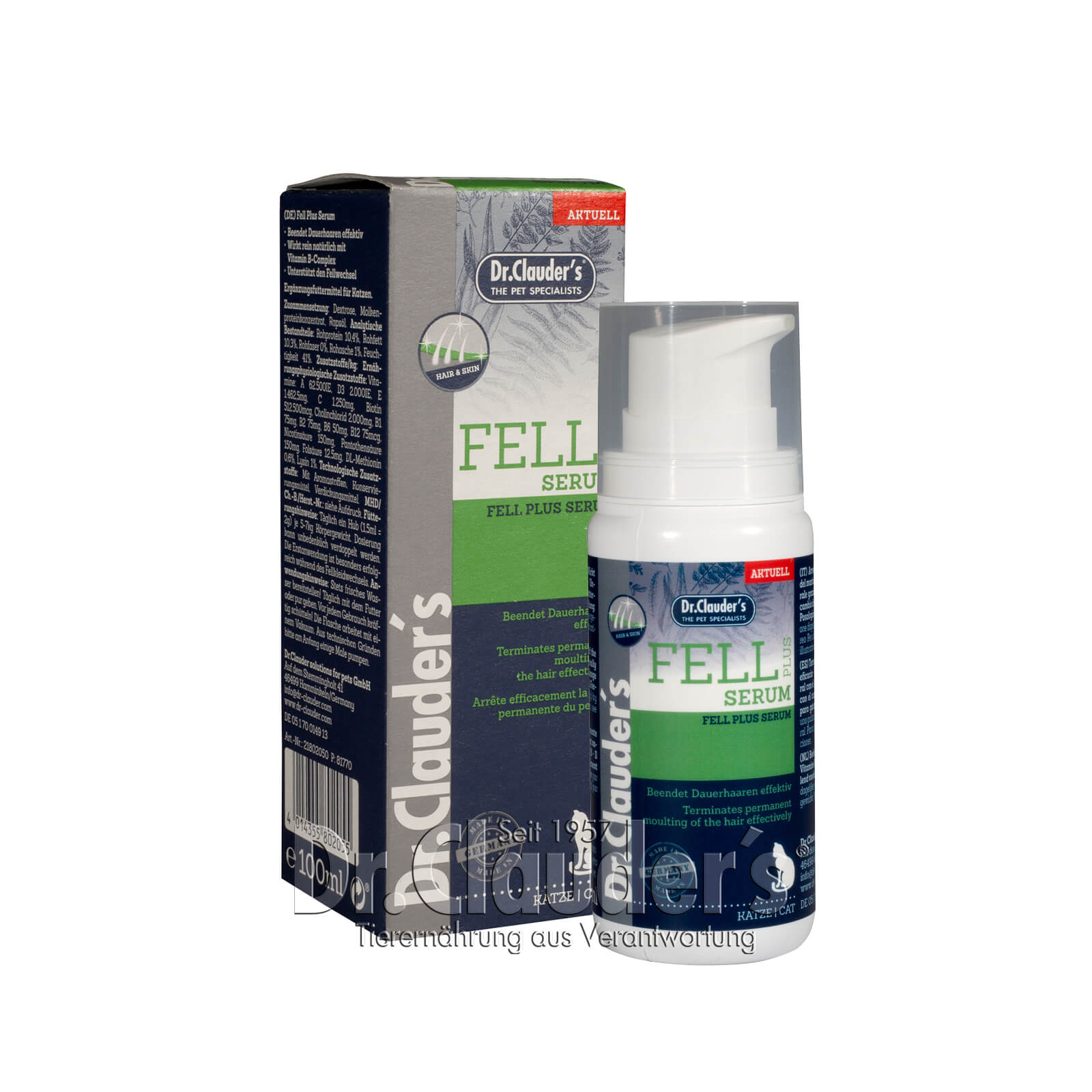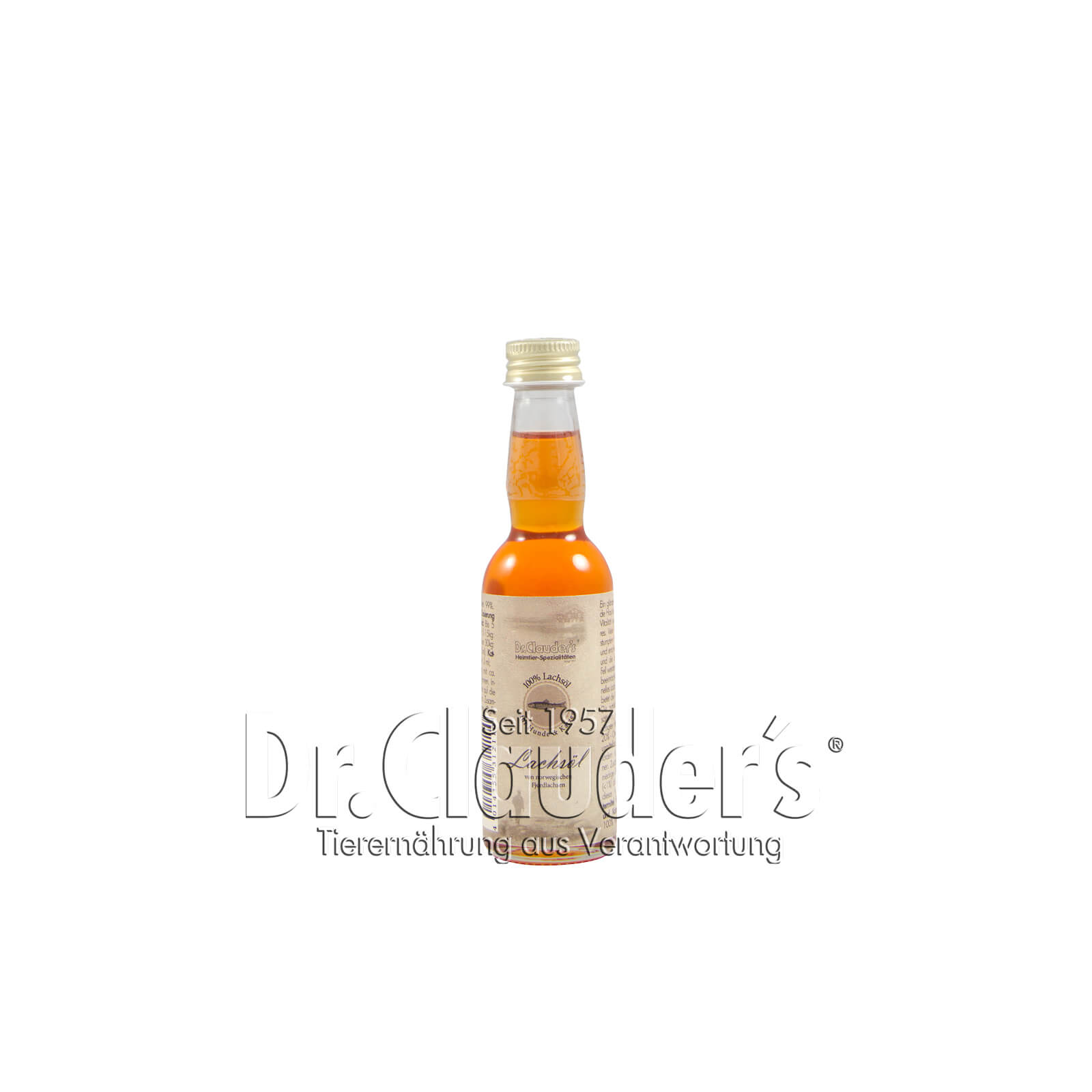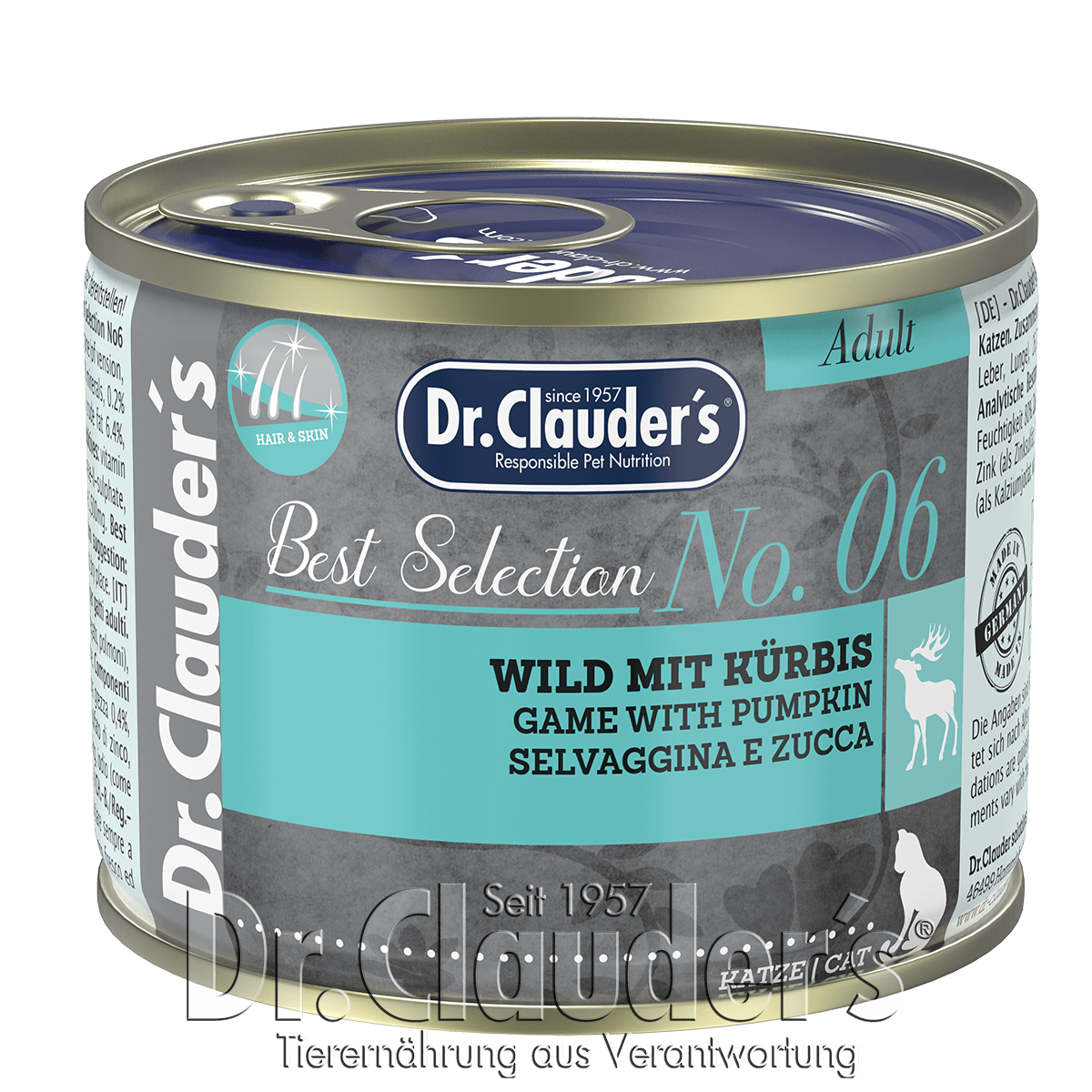Included in this article:
- Cat skin
- Skin diseases
- Symptoms
- Coat change
- Nutrition factor
- Points to note
- Product tips
Skin and coat care for cats
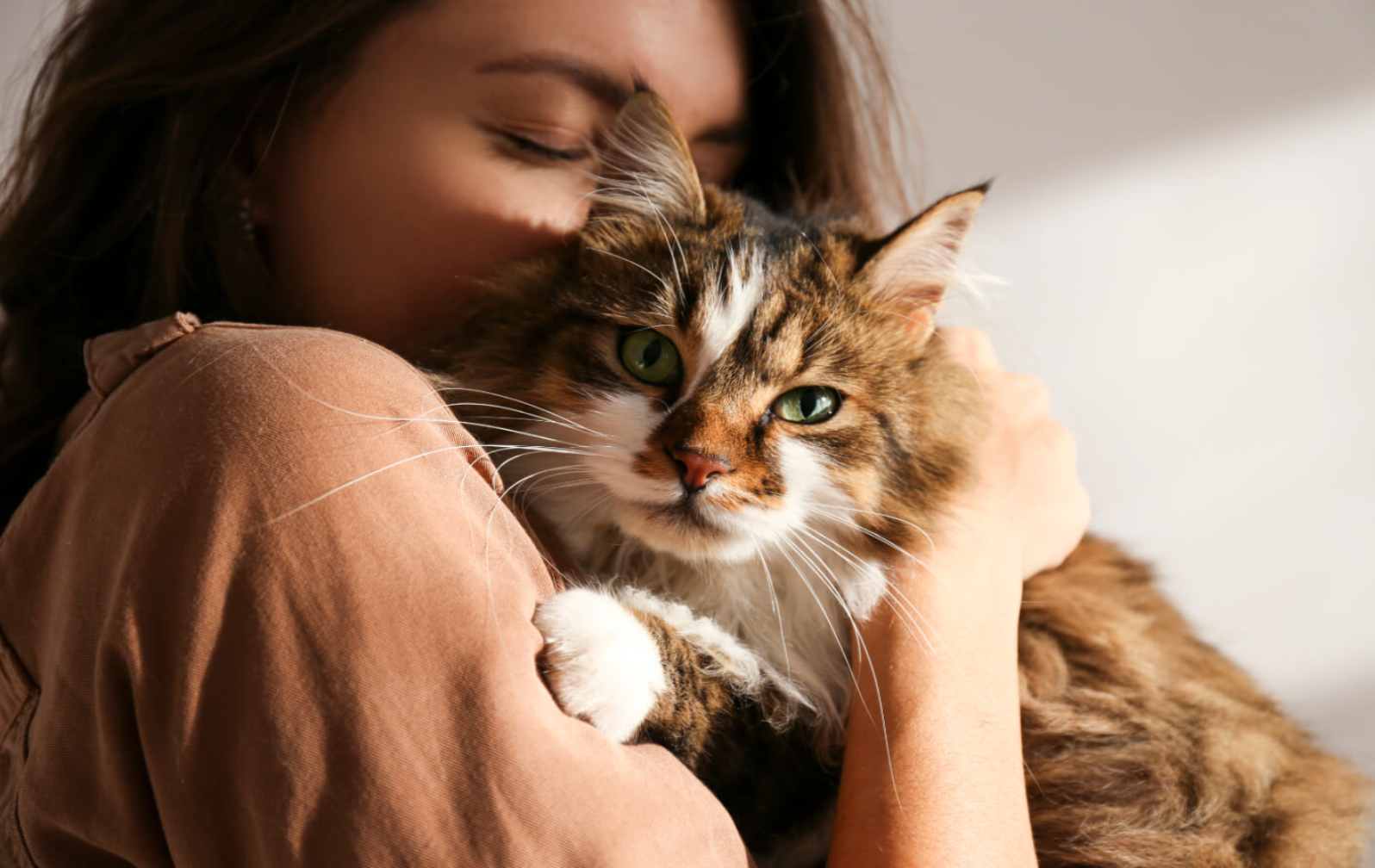
If your cat's coat changes, it can be normal, but it can also have serious causes such as skin diseases.
In this article you will learn which factors influence the condition of your cat's skin and coat and what you can do as an owner to help your beloved cat have a silky coat and healthy skin.
The structure of the cat's skin
The skin is the cat's largest organ and performs many important functions:
- Protects against environmental influences
- Regulates the body temperature
- Important sensory organ
In total, the cat's skin consists of three layers, each with different cell types with specialised properties:
- The epidermis: Several layers of horny cells protect against invading germs or other harmful external influences.
- The dermis: This layer consists of blood vessels, among other things, which serve to supply the skin with nutrients and regulate heat. Nerve cells end here in different receptors, and ensure that the cat can feel heat, cold, pain and pressure stimuli. Sebaceous glands secrete a greasy secretion, which keeps the coat dry and warm. With the help of the scent glands, each cat produces its own scent. These scents are used for communication between the animals. This allows them to mark their territory by rubbing against objects (or their humans).
- The subcutis: Composed of fatty tissue and blood vessels, this layer serves as an energy store and protects against cold and overheating. The tissue is also a good water reservoir and prevents water loss in the body. The "fat cushion" also protects against injuries from impacts.
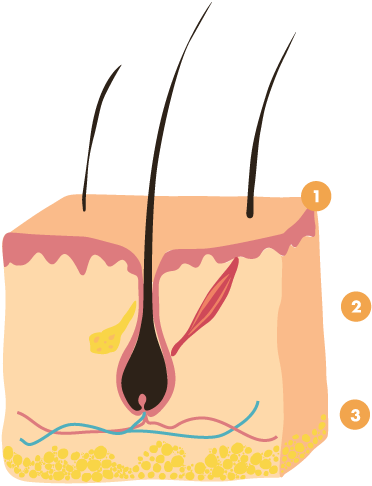
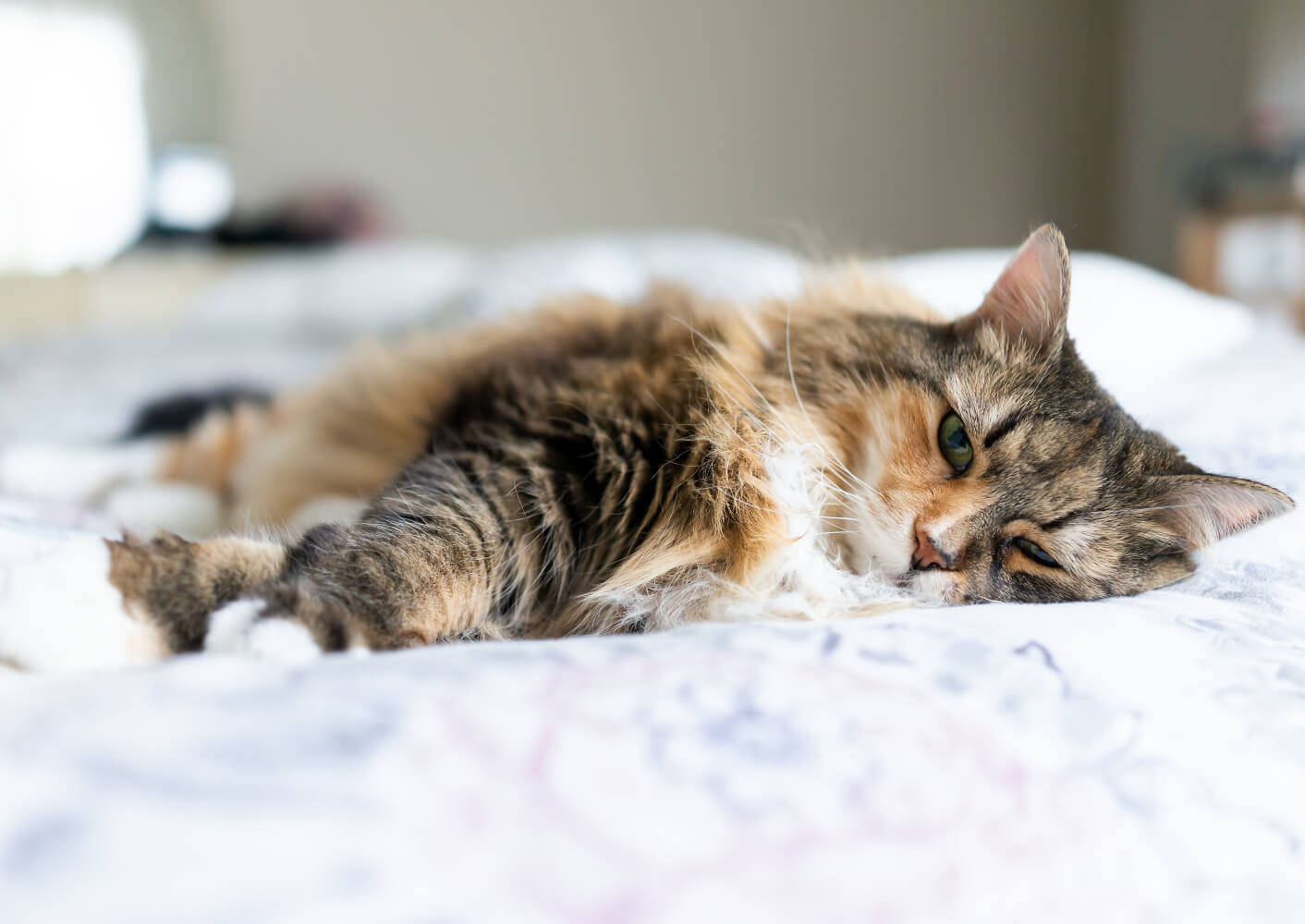
What skin diseases are there in cats?
The cat's skin reacts sensitively to disturbing influences from inside and outside. The causes of skin diseases in cats are varied: metabolic disorders, hormone disorders or autoimmune diseases can be reflected in the appearance of the skin. Other causes can be bacteria, viruses, parasites, radiation or mechanical stimuli. If you suspect that your cat is suffering from a skin disease, consult a vet immediately.
During a dermatological examination, vets will check the skin, coat, mucous membranes, claws and ears, including the external auditory canal. In addition, special tests can be carried out to help determine the cause of the disease:
- Flea comb test
- Allergy test
- Mycological culture (fungal culture)
Here you will find an overview of skin diseases:
How to recognise skin problems in your cat
The condition of your cat's coat provides information about its state of health. If the skin or coat is altered, dull and lacklustre, shaggy and straw-like, sticky or matted, this may be due to illness, malnutrition or parasite infestation.
If you notice any of the following warning signs, you should consult a veterinarian:
- Poor hygiene as a cause of pain
- Hairless patches: the underlying skin is red or altered.
- Redness, dry and scaly skin
- Inflamed, open wounds
- Excessive scratching, licking or chewing of the coat. This behaviour indicates itching.
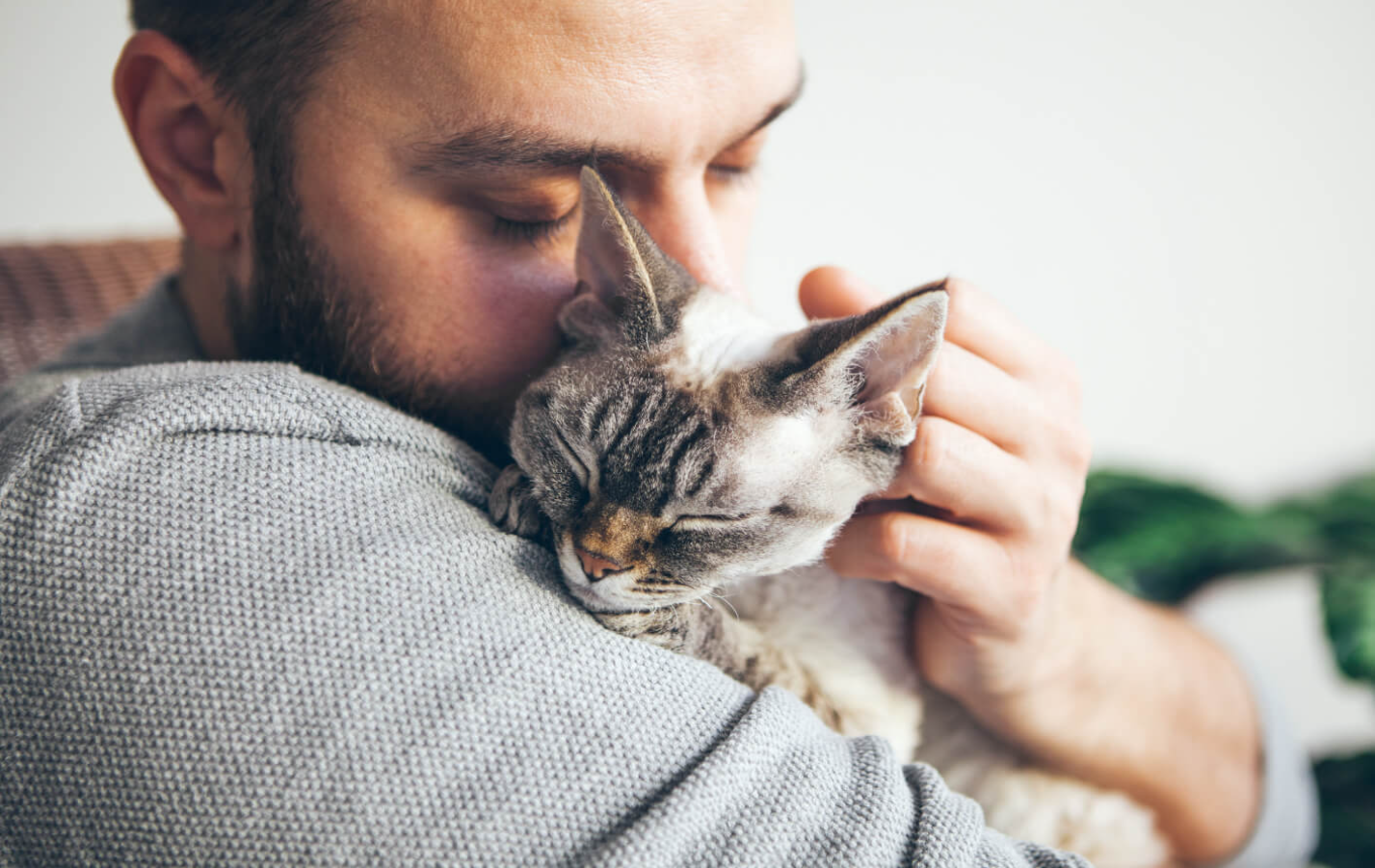
Coat change in cats
It is important to distinguish pathological changes from normal coat development. Normal coat development in cats is:
- Loss of the kitten coat
- Change between winter and summer coat
- Hairless areas at pressure points (horny calluses)
- Grey hairs: Loss of pigment is a common age change in cats, as is dull coat and reduced sebum secretion.
- Less hairy areas at the temples, especially in shorthair cats.
- Hairlessness over old scars
Itching during shedding is common - similar to dogs: The loose hairs first get stuck in the coat because they are "held" by the surrounding hairs. The loose hairs keep pricking the skin - this itches and causes your cat to scratch more than usual during the change of coat.
The change from summer to winter coat (or vice versa) can take different lengths of time and depends on whether your cat is an indoor cat or an outdoor cat. Outdoor cats usually shed for 6 to 8 weeks. House cats are not exposed to the seasons and therefore shed much less and usually for a shorter period of time.
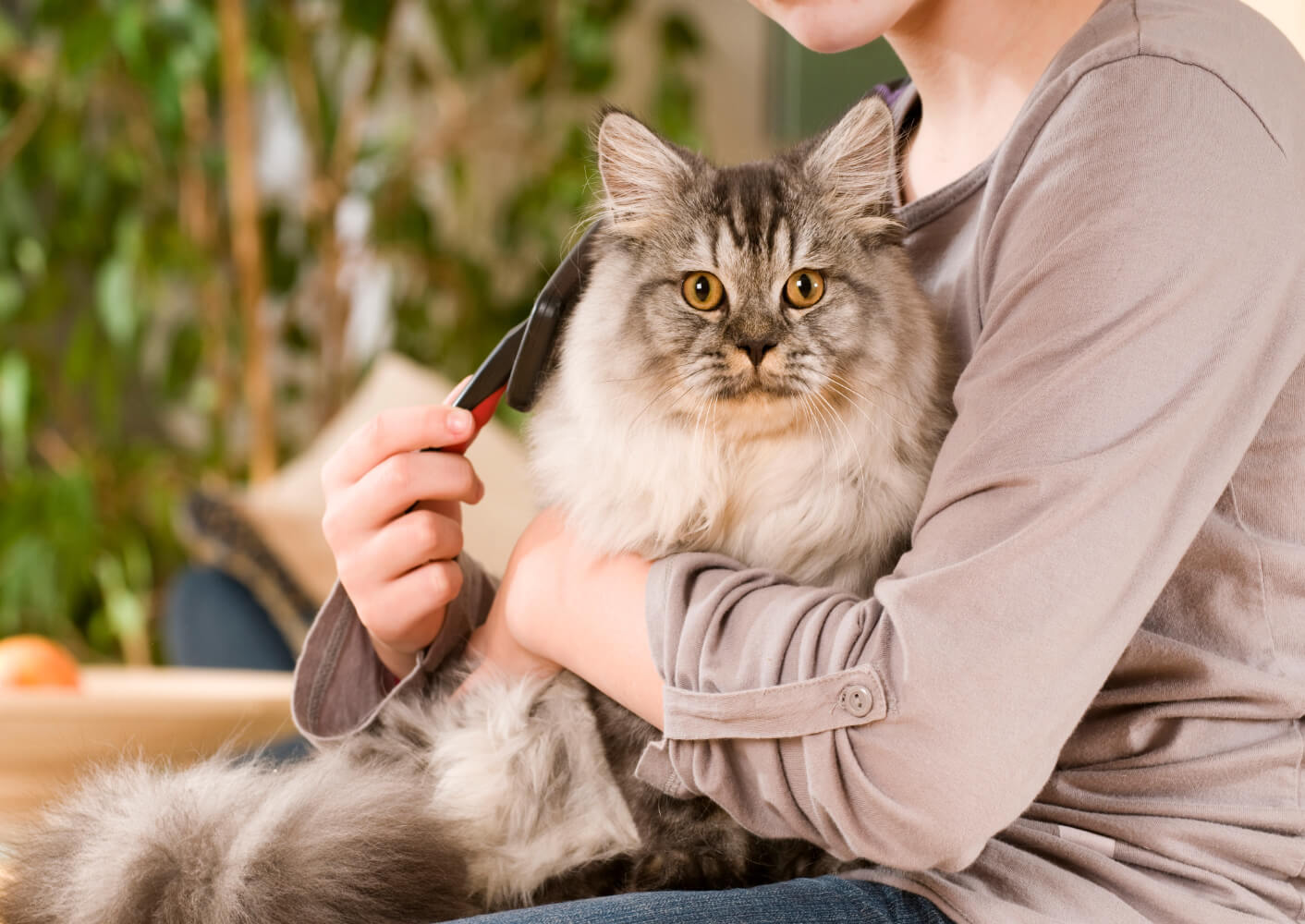
Here's how you can help your cat change its coat
A cat has about 25,000 hairs per square centimetre - that's an impressive hair density. By comparison, dogs have a hair density of 1,000 to 9,000 hairs per square centimetre. No wonder, then, that the homes of cat owners are often full of cat hair.
Especially during the shedding period, regular brushing will help your cat get rid of the fur. Breeds with very long hair, need support during this time.
Other positive effects:
- The massage effect of brushing stimulates blood circulation
- The coat shines silky
- The stroking stimulates the relationship between animal and human.
- Less hair ends up on the sofa, bed or black trousers.
If your cat shies away from the brush, there is only one thing that helps: patience. Get him used to it slowly - for example, when he is in a cuddly mood anyway. Alternately stroke your cat with your hand and then carefully with the brush - as long as she puts up with it. If she is no longer in the mood, interrupt the ritual and try again the next day.
What helps with hairballs?
When brushing with the tongue, your cat will swallow more hair, especially during the shedding period. These hairballs form in the stomach and the cat normally regurgitates them. However, this process can lead to discomfort in the digestive tract.
Dr.Clauder's Intestinal Paste - Antihairballwith Taurine counteracts this. The special composition of fruit cellulose, malt and fats promotes the natural expulsion of hair from the stomach and intestines. This is a natural way to prevent vomiting hairballs - which promotes the health and well-being of your cat. The tasty paste also contains the vital amino acid taurine, which has positive effects on the metabolism, digestion and fertility of our cats.
How to prevent skin and coat problems in your cat
Proper husbandry and care are the most important factors in preventing skin and coat problems in cats:
Proper nutrition: Use high-quality food to avoid deficiencies in vitamins, fatty acids and minerals.
- Always store cat food in an airtight container to prevent parasites.
- Control bugs and parasites: Consistent tick, flea and worm treatment offers protection. For example, use special flea collars or spot-on preparations.
- Clean your cat's sleeping areas regularly.
- Regular brushing: The coat of long-haired animals, especially those with a dense undercoat, needs a lot of care so that no matted areas can form.
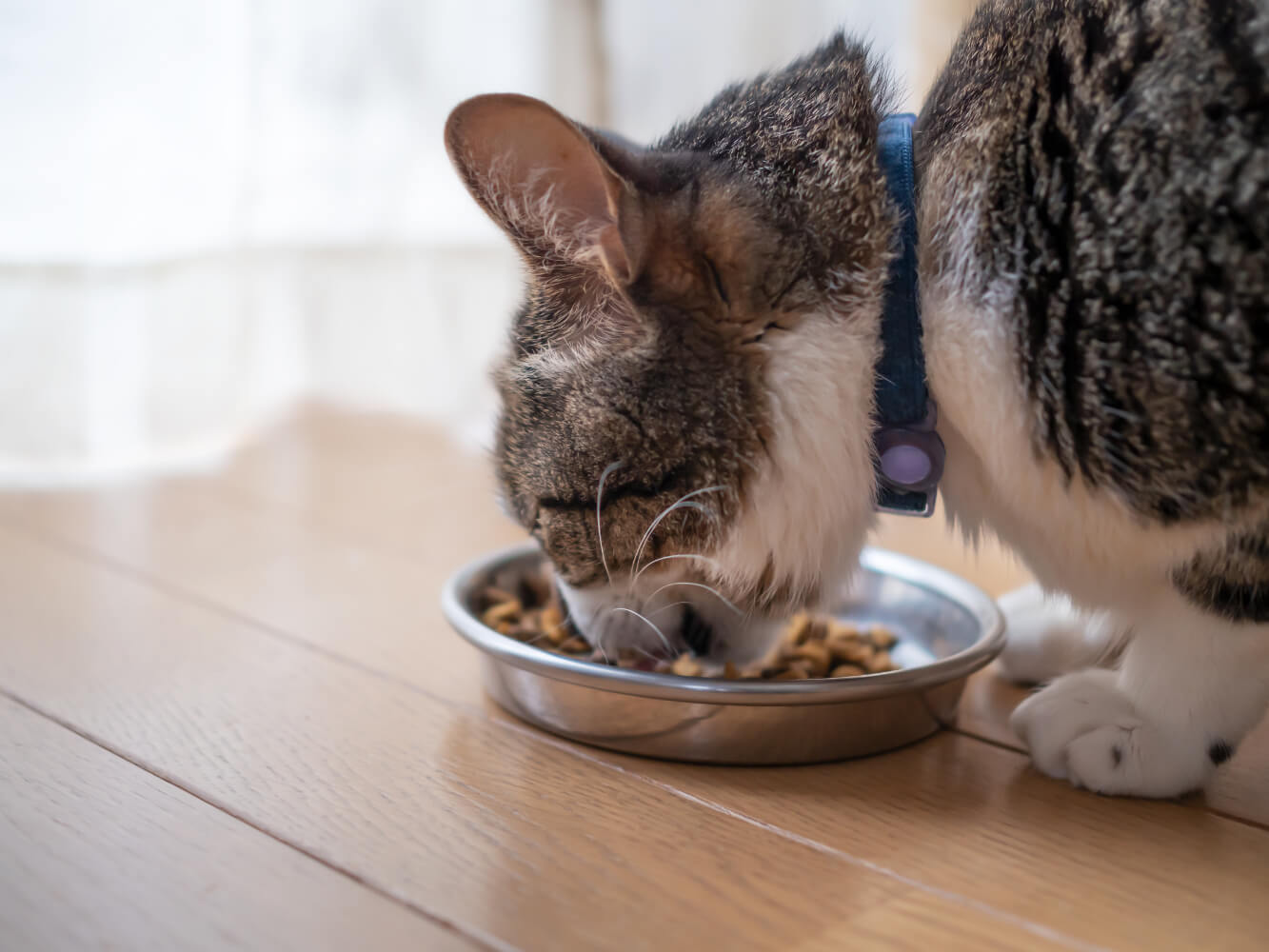
Beauty from within through healthy nutrition
Nutrition plays a major role in the appearance of your cat's skin and coat. Above all, it should be balanced. High-quality food is an important basis for this. Selected types of food with the appropriate recipes can contribute to a shiny coat and resistant skin on a daily basis. But as an owner you can also actively strengthen the well-being of your cats.
Symptoms such as permanent hair loss, dull coat or flaky skin indicate nutritional deficiencies, which not only cause discomfort in the four-legged friend, but can also impair the immune system and vitality. However, it is often not that easy to meet a cat's dietary requirements: Our velvet paws need up to 30 % of their daily protein intake for hair growth and skin renewal alone. A protein deficiency can therefore quickly lead to a bad coat and irritated skin.
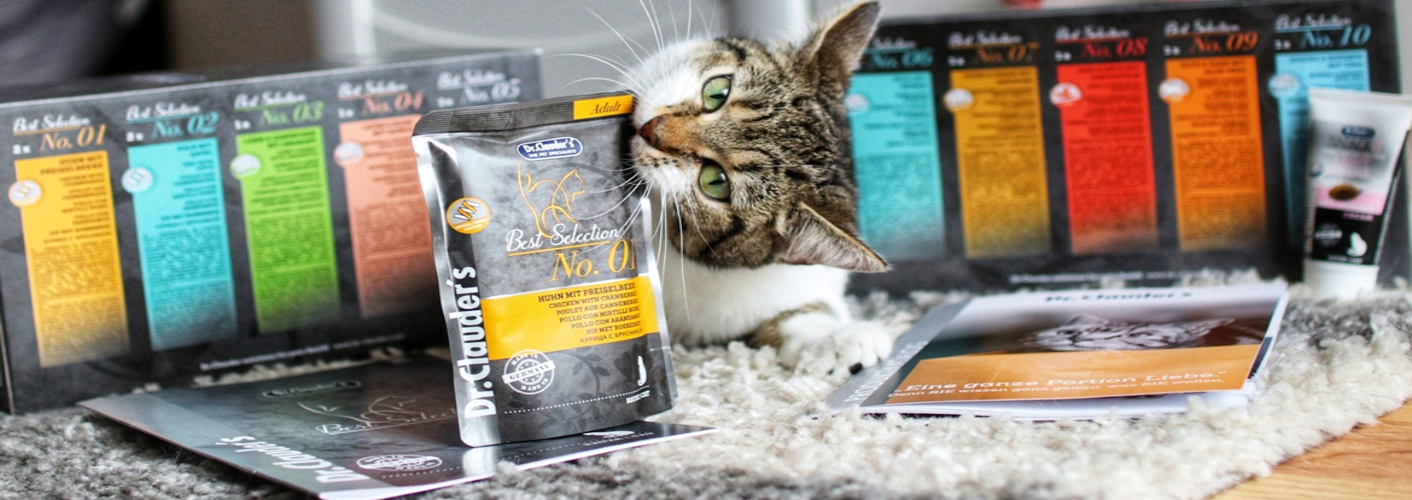
The way to a cat's heart is through its stomach - and so is its health
Cats have a mind of their own - you probably know this from your darling. Convincing them to take supplementary food in the form of tablets or powders can be a real challenge. So why not go for a high-quality wet food that tastes good to your cat and at the same time provides valuable ingredients for coat and skin?
The 85g pouches of the Best Selection range from Dr.Clauder's offer cats varied meals and are matched with appropriate oils depending on the flavour variation. No. 3 with lamb & rabbit and amaranth provides high-quality linseed oil that strengthens the cats' skin and coat. No. 4 with chicken and salmon is enriched with salmon oil. The latter provides an appealing flavour and a shiny (coat) appearance. Safflower oil pampers the skin and coat of the little gourmets in the flavours Game with Pumpkin No. 6 and Chicken & Pheasant with Apricot No. 7. Best Selection No. 10 with Herring & Shrimps and Chia provides real superfood. Both the fish and the chia seeds provide a high omega-3 content and thus have a positive effect on the cats' coat. Safflower oil rounds off the recipe.
You should remember this
Dr.Clauder's for skin and coat
Cats are real individualists when it comes to their taste. Dr.Clauder's offers a wide range of high-quality products to supplement your cat's daily diet optimally and according to its needs. Here you will find our product tips for a silky and shiny coat and healthy skin.

